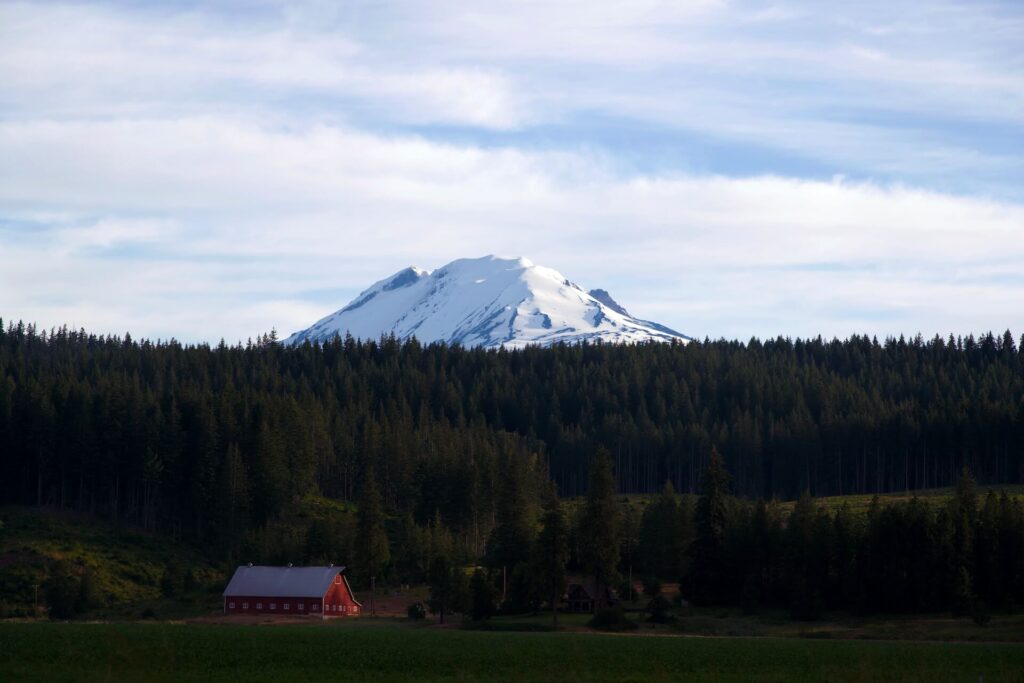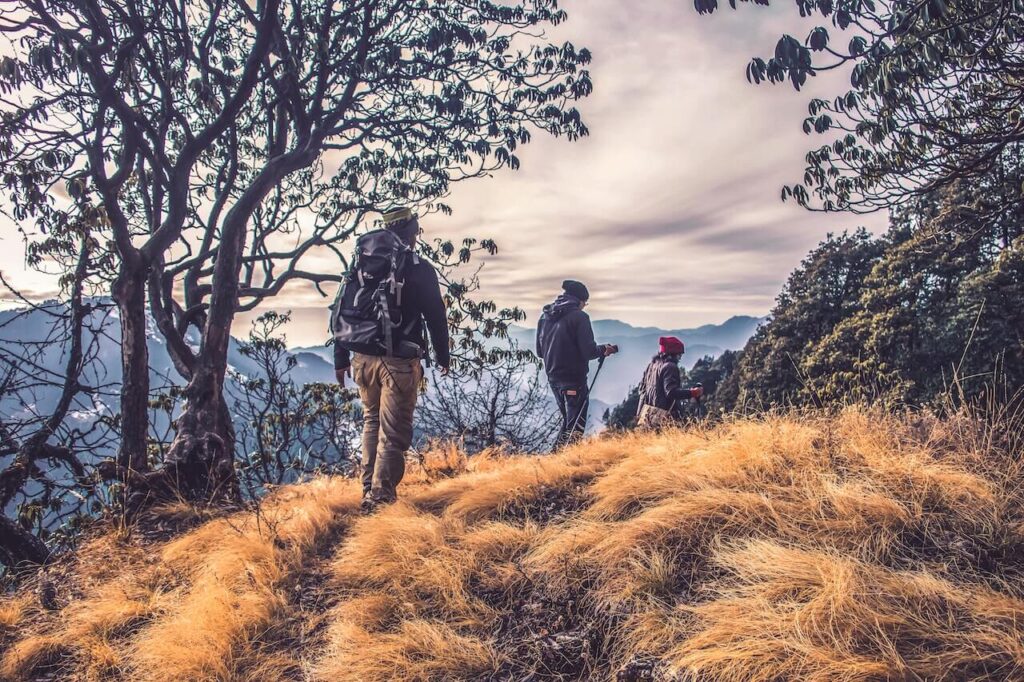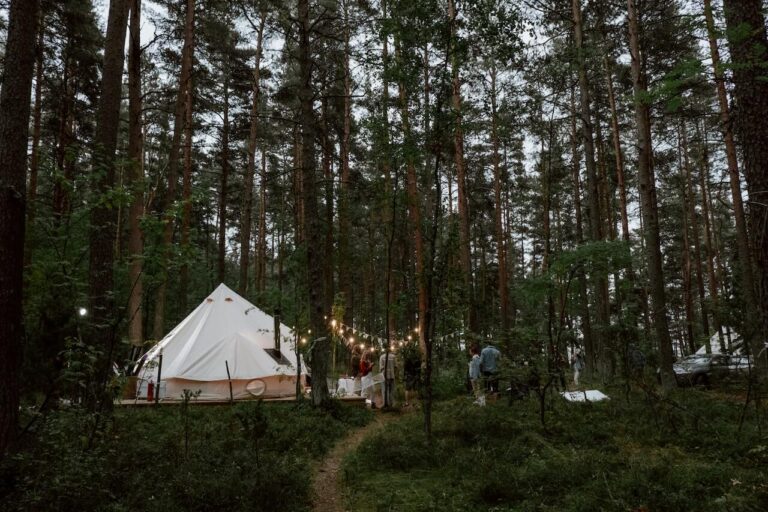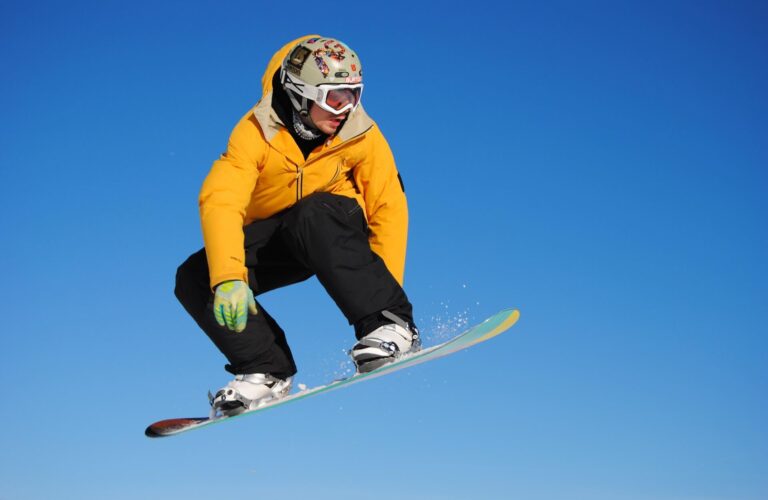
Introduction
Camping in national forests is a unique and exciting way to experience the natural beauty of the United States. National forests are vast public lands that are preserved and managed by the federal government to provide recreational opportunities, preserve natural resources, and protect wildlife. They offer a wide range of outdoor activities, from hiking and fishing to wildlife watching and camping.
Camping in national forests allows you to fully immerse yourself in the beauty and tranquility of nature. Away from the hustle and bustle of city life, you can enjoy the peace and quiet of the wilderness and take in the stunning scenery that surrounds you. Whether you’re camping with family or friends, or embarking on a solo adventure, camping in national forests provides a unique opportunity to disconnect from technology and reconnect with the natural world.
Benefits of Camping in National Forests
There are many benefits to camping in national forests. Here are just a few:
- Affordable: National forest camping is typically much more affordable than staying in a hotel or other types of accommodations. In fact, many campsites in national forests are free or require only a small fee.
- Scenic beauty: National forests are known for their breathtaking natural beauty. From towering trees and rugged mountains to pristine lakes and winding rivers, the scenery in national forests is simply stunning.
- Outdoor recreation: National forests offer a wide range of outdoor recreational opportunities. Whether you’re interested in hiking, fishing, hunting, or wildlife watching, there’s something for everyone.
- Peace and quiet: Camping in national forests provides an escape from the noise and distractions of daily life. It’s a chance to unplug, unwind, and recharge in the peace and quiet of nature.
- Wildlife viewing: National forests are home to a wide variety of wildlife, including bears, moose, elk, and deer. Camping in national forests provides a unique opportunity to observe these animals in their natural habitat.
- Education: National forests are also a great place to learn about the environment and the natural world. Many national forests offer educational programs and guided tours that provide insight into the ecology and history of the area.

Choosing a National Forest to Camp In
Camping in a national forest is a great way to enjoy nature and have a memorable outdoor experience. However, before heading out, it’s important to choose the right national forest for your camping trip. Here are some key factors to consider when choosing a national forest to camp in:
A. Researching National Forests
The first step in choosing a national forest to camp in is to do your research. There are numerous national forests located throughout the United States, each with its unique features, landscapes, and recreational opportunities. Some of the most popular national forests for camping include:
- The Grand Canyon National Forest in Arizona
- The Olympic National Forest in Washington
- The Pisgah National Forest in North Carolina
- The Uinta-Wasatch-Cache National Forest in Utah
- The White Mountain National Forest in New Hampshire
To narrow down your choices, consider what activities you want to do during your camping trip. Are you interested in hiking, fishing, or wildlife watching? Do you want to camp near a lake or a river? Knowing what you want to do can help you choose a national forest that’s best suited to your interests.
B. Considering Camping Regulations
Once you’ve narrowed down your list of potential national forests, the next step is to research their camping regulations. Each national forest has its own set of rules and regulations, including restrictions on campfires, limits on the number of people and vehicles allowed at a campsite, and requirements for storing food and disposing of waste.
It’s essential to familiarize yourself with the camping regulations of the national forest you plan to visit to ensure that you comply with them. Violating camping regulations can result in fines or even eviction from the forest.
C. Looking at Campsite Amenities
Another crucial factor to consider when choosing a national forest to camp in is the availability of amenities at the campsites. Some campsites in national forests are more primitive than others, with no running water, electricity, or restroom facilities. Other campsites offer more amenities, such as showers, picnic tables, and fire pits.
When researching national forests, be sure to look at the amenities offered at each campsite to ensure that they meet your needs. If you’re traveling with children or pets, you may want to choose a campsite with restroom facilities or a playground.
D. Identifying Camping Needs
Finally, when choosing a national forest to camp in, it’s essential to identify your camping needs. Do you need a large campsite to accommodate a group of people, or do you prefer a more secluded campsite for privacy? Do you need a campsite that’s close to the trailhead for hiking or fishing, or do you prefer a campsite that’s away from the crowds?
Identifying your camping needs can help you narrow down your choices and choose a national forest that meets your specific requirements. It’s important to make a camping checklist to ensure that you have all the necessary gear and equipment for your trip.

Obtaining Permits and Making Reservations
Once you have chosen a national forest and campsite for your camping trip, the next step is to obtain any necessary permits and make reservations. Here are some key factors to consider when obtaining permits and making reservations for your national forest camping trip:
A. Navigating Permit Requirements
Many national forests require permits for camping, especially for backcountry camping or camping in designated wilderness areas. The permit requirements vary from forest to forest and may depend on the time of year, the location of the campsite, and the number of people in your group.
Before making a reservation, it’s important to research the permit requirements for the national forest and campsite you have chosen. You can typically find this information on the forest’s website or by contacting the forest’s ranger station. Some national forests also have online permit systems, where you can apply for and obtain permits in advance.
B. Reservation Considerations
In addition to permits, many national forests also require reservations for camping, especially during peak season or for popular campsites. Reservations help ensure that campsites are available when you arrive and can help prevent overcrowding and environmental damage.
When making a reservation, consider the following factors:
- Campsite availability: Check the availability of campsites for your preferred dates and make sure there are enough sites available for your group size.
- Campsite amenities: Consider the amenities offered at the campsites, such as restrooms, showers, picnic tables, and fire pits.
- Location: Consider the location of the campsite and its proximity to hiking trails, lakes, rivers, and other recreational activities.
- Fees: Check the reservation fees and any additional fees for parking or use of amenities.
C. Making Reservations and Obtaining Permits
Once you have navigated the permit requirements and considered the reservation factors, it’s time to make your reservation and obtain any necessary permits. Most national forests have online reservation systems, where you can search for available campsites and make a reservation. You may need to pay a deposit or a reservation fee when making a reservation.
If a permit is required for your camping trip, you may need to apply for and obtain it in advance. Some national forests have online permit systems, while others require you to obtain a permit in person at a ranger station. It’s important to apply for and obtain the permit before your camping trip to avoid any delays or issues when you arrive at the forest.

Essential Gear for National Forest Camping
When planning a camping trip in a national forest, it’s essential to have the right gear to ensure a safe and enjoyable experience. Here are some key items to consider when packing for your national forest camping trip:
A. Tent and Sleeping Gear
A sturdy and reliable tent is crucial for a comfortable and safe camping experience. Look for a tent that is appropriate for the weather conditions and terrain of the national forest you’ll be camping in. Consider the size of your group and choose a tent that provides enough space for everyone to sleep comfortably.
In addition to a tent, you’ll also need sleeping gear such as sleeping bags, sleeping pads, and pillows. Choose sleeping bags that are appropriate for the temperature range of the forest you’ll be camping in, and look for sleeping pads that provide adequate insulation and cushioning.
B. Cooking Equipment and Food Supplies
When camping in a national forest, you’ll need to bring your own food supplies and cooking equipment. Portable stoves, fuel canisters, and cookware are essential for cooking meals while camping. Be sure to also bring utensils, plates, and cups.
When selecting food supplies, choose non-perishable items that are easy to transport and prepare. Consider bringing items such as canned goods, dried fruit, nuts, and instant oatmeal. Don’t forget to also pack snacks to fuel your hiking and other outdoor activities.
C. Clothing and Footwear
When packing clothing and footwear for your national forest camping trip, consider the weather conditions and terrain of the forest. Choose clothing that is appropriate for the temperature and weather conditions, and bring extra layers in case of unexpected changes in weather.
Sturdy and comfortable hiking boots are essential for hiking and exploring the forest. Be sure to also pack socks that are appropriate for hiking and other outdoor activities.
D. Navigation Tools and Lighting
When camping in a national forest, it’s important to have navigation tools and lighting to ensure you can navigate the forest safely. A map and compass are essential for navigating the forest, as well as a GPS device if you have one.
Headlamps, flashlights, and lanterns are also essential for lighting your way in the forest, especially at night. Be sure to bring extra batteries and fuel canisters for your lighting devices.
E. Personal Care Items and First-Aid Supplies
Personal care items and first-aid supplies are essential for maintaining hygiene and addressing any injuries or medical needs that may arise during your camping trip. Be sure to pack items such as toiletries, sunscreen, insect repellent, and a first-aid kit.
The first-aid kit should include items such as bandages, gauze, antiseptic wipes, and pain relievers such as ibuprofen and acetaminophen. If you have any pre-existing medical conditions or allergies, be sure to pack any necessary medications and inform your camping companions of your needs.
It’s also a good idea to bring a multi-tool or knife for general use and emergency situations.

Camping Etiquette and Safety
When camping in a national forest, it’s important to follow proper etiquette and safety practices to ensure a positive and safe experience for yourself and others. Here are some key considerations to keep in mind:
A. Leave No Trace Principles
One of the most important principles of camping in a national forest is to follow Leave No Trace principles. This means leaving the forest in the same condition as you found it, minimizing your impact on the environment and wildlife.
Some key Leave No Trace practices to follow include:
- Pack out all trash and litter, including food scraps and biodegradable waste.
- Use established campsites and fire rings to minimize damage to the environment.
- Do not disturb or harm wildlife, and keep a safe distance from animals.
- Avoid using soap and other personal care products in natural water sources.
- Respect other campers’ privacy and keep noise levels low.
By following Leave No Trace principles, you can help preserve the beauty and natural resources of the national forest for future generations.
B. Fire Safety
Campfires can be an enjoyable part of camping, but it’s important to follow fire safety guidelines to prevent accidents and forest fires. Check for any fire restrictions in the national forest you’ll be camping in, and follow these guidelines:
- Use established fire rings or fire pits, and avoid building new fire rings.
- Clear the area around the fire ring of any flammable materials, such as dry leaves and grass.
- Keep a supply of water and a shovel nearby to extinguish the fire if necessary.
- Never leave a fire unattended, and fully extinguish the fire before leaving or going to sleep.
- Use a portable stove for cooking whenever possible to minimize the risk of accidental fires.
C. Wildlife Safety
National forests are home to a variety of wildlife, including bears, wolves, and mountain lions. To ensure your safety and the safety of the wildlife, follow these guidelines:
- Store food and trash in bear-resistant containers or hang them from a tree at least 10 feet off the ground and 4 feet away from the trunk.
- Do not feed wildlife or approach them.
- Keep a safe distance from animals, and do not interfere with their natural behaviors.
- If you encounter a bear, make loud noises to scare it away and slowly back away.
- Keep pets on a leash and under control at all times to prevent them from chasing or disturbing wildlife.
D. Other Safety Considerations
In addition, to Leave No Trace principles, fire safety, and wildlife safety, there are other safety considerations to keep in mind when camping in a national forest. These include:
- Be aware of weather conditions and potential hazards such as flash floods, lightning, and falling trees.
- Follow all regulations and guidelines set by the national forest, such as permit requirements and camping restrictions.
- Let someone know your camping plans, including your intended route and expected return date.
- Carry a first-aid kit and know how to use it in case of an emergency.
- Be aware of your surroundings and stay alert for potential risks and hazards.

Setting Up Camp
Once you have chosen a national forest and obtained the necessary permits and reservations, it’s time to set up camp. Here are some tips for finding the right campsite and setting up your tent and campsite amenities:
A. Finding the Right Campsite
When choosing a campsite, look for a level area that is free of hazards such as sharp rocks or overhanging branches. Consider proximity to water sources, bathrooms, and other amenities, as well as the privacy and noise level of the site.
Be sure to also follow any regulations or guidelines set by the national forest, such as restrictions on camping near water sources or at certain elevations.
B. Setting Up a Tent
Setting up a tent is an essential part of camping in a national forest. Here are some tips for setting up your tent:
- Choose a flat and level area to pitch your tent.
- Clear any rocks, sticks, or debris from the area before setting up your tent.
- Use a footprint or ground cloth under your tent to protect it from moisture and abrasions.
- Make sure the rainfly is securely attached to the tent to provide protection from rain and wind.
- Use guylines and stakes to secure your tent and prevent it from collapsing in high winds.
Practice setting up your tent at home before your camping trip to ensure you can set it up quickly and efficiently.
C. Arranging Campsite Amenities
Once your tent is set up, it’s time to arrange your campsite amenities. Here are some essentials to consider:
- Campfire ring or portable stove for cooking meals.
- Food storage containers or bear-resistant canisters to prevent animals from getting into your food.
- Water containers or purification methods to ensure safe drinking water.
- Lighting sources such as flashlights or lanterns for visibility at night.
- Seating such as camping chairs or logs for relaxing.
- A tarp or canopy for shade or rain protection.
Organize your campsite in a way that is functional and easy to navigate, and be sure to follow Leave No Trace principles by packing out all trash and leaving the campsite in the same condition as you found it.

Exploring National Forests
One of the best things about camping in a national forest is the opportunity to explore the natural beauty and wildlife of the area. Here are some tips for safely and responsibly exploring national forests:
A. Hiking and Trail Safety
Hiking is one of the most popular activities in national forests, and there are often numerous trails of varying difficulty levels to choose from. Here are some tips for safe and enjoyable hiking:
- Plan your route in advance and bring a map or GPS device.
- Wear appropriate footwear and clothing, and bring plenty of water and snacks.
- Stay on designated trails to avoid damaging sensitive habitats.
- Be aware of your surroundings and watch for wildlife.
- Check weather forecasts before heading out and avoid hiking in dangerous conditions such as thunderstorms or extreme heat.
- Let someone know your hiking plans and expected return time.
B. Wildlife Watching
National forests are home to a variety of wildlife, from bears and deer to birds and reptiles. Here are some tips for safely observing wildlife:
- Keep a safe distance from animals and never approach or feed them.
- Use binoculars or a camera with a zoom lens to get a closer look.
- Observe animals from a safe location such as a viewing platform or designated wildlife viewing area.
- Avoid making loud noises or sudden movements that could startle animals.
C. Fishing and Hunting
National forests also offer opportunities for fishing and hunting, with a variety of fish and game species available depending on the region. Here are some tips for responsible fishing and hunting:
- Obtain any necessary permits and follow all regulations and guidelines set by the national forest.
- Practice catch-and-release fishing to help preserve fish populations.
- Use appropriate fishing gear and techniques, and properly dispose of any fishing line or hooks to prevent harm to wildlife.
- Hunt only in designated areas and practice safe and ethical hunting techniques.
D. Other Outdoor Activities
National forests offer a wide range of other outdoor activities such as camping, boating, mountain biking, and rock climbing. Here are some tips for safely and responsibly enjoying these activities:
- Obtain any necessary permits and follow all regulations and guidelines set by the national forest.
- Use appropriate safety equipment and techniques for each activity.
- Be aware of your surroundings and watch for hazards such as falling rocks or swift water currents.
- Respect other visitors and the natural environment by following Leave No Trace principles and leaving the area in the same condition as you found it.

Conclusion
Camping in a national forest is a great way to experience the beauty and wonder of nature while enjoying a range of outdoor activities. By researching national forests, understanding camping regulations, and preparing essential gear, you can have a safe and enjoyable camping experience.
It’s important to practice Leave No Trace principles and follow safety guidelines while exploring the forest and respect the natural environment and other visitors. Whether you’re hiking, fishing, or simply taking in the scenery, camping in a national forest offers a unique opportunity to connect with nature and make lasting memories.
Read more articles here.





